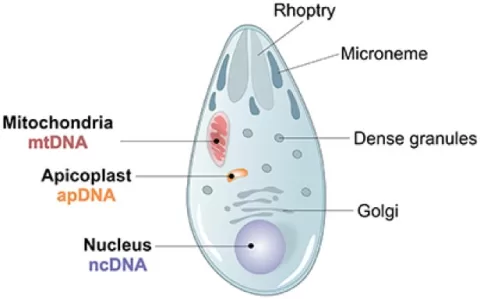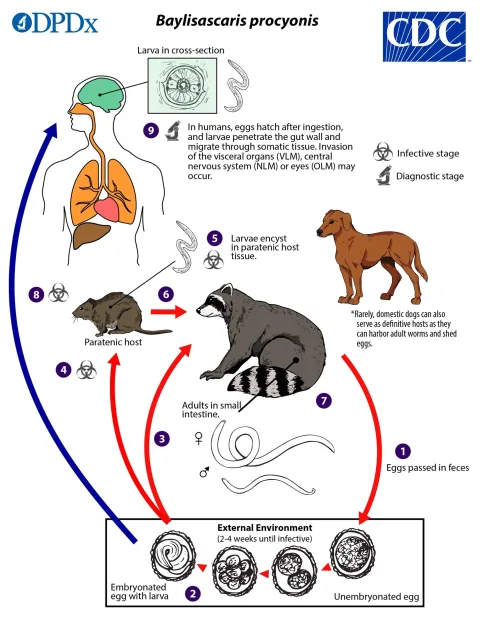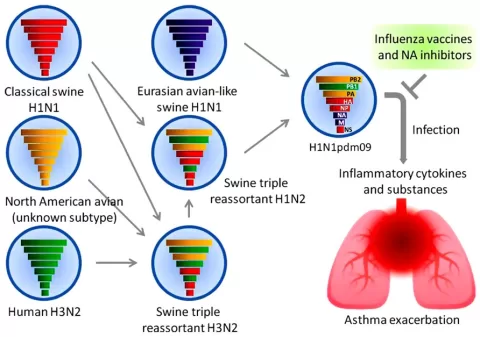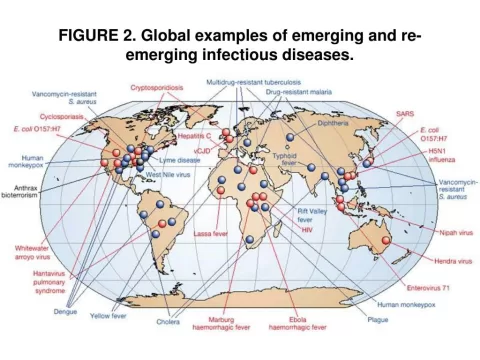Dirofilaria repens infection, also known as human dirofilariosis, is an emerging concern in regions where mosquito-borne zoonotic diseases are prevalent. This parasitic infection is primarily characterized by the presence of subcutaneous nodules that can migrate within the facial tissue, as highlighted in recent cases from Southern Europe. Dirofilaria treatment is essential for patients suffering from migrating lesions, which often lead to misdiagnoses and delayed care. The increasing incidence of canine dirofilariosis poses additional risks, emphasizing the importance of vector control to protect human health. Understanding the implications of Dirofilaria repens infections can enhance awareness and improve diagnostic practices across affected communities.
Human dirofilariosis, commonly referred to as Dirofilaria infection, represents a critical issue in the landscape of zoonotic diseases, particularly in Mediterranean regions. This infection results from the parasitic nematode Dirofilaria repens, which typically manifests through subcutaneous nodules that may appear in various anatomical locations, including the facial area. Often misdiagnosed due to its atypical presentation, this disease emphasizes the need for vigilance among healthcare providers and the implementation of effective Dirofilaria treatment protocols. The dynamic nature of facial tissue migration associated with this infection further complicates clinical evaluation. Increasing awareness of the risk factors linked to canine dirofilariosis and its connection to human health is crucial for mitigating the spread of this disease.
Understanding Dirofilaria Repens Infection
Dirofilaria repens infection, a zoonotic disease predominantly transmitted through mosquito bites, is gaining recognition for its increasing prevalence in human populations. Identified primarily in domestic and wild carnivores, including dogs and cats, this parasitic condition is characterized by the migration of larval stages into the human subcutaneous tissue. The symptoms of Dirofilariosis can vary significantly, often leading to diagnostic challenges as it may mimic other skin lesions or subcutaneous nodules. Awareness of this parasitic infection among healthcare providers is crucial to ensure accurate diagnosis and treatment.
In recent years, there has been a noted rise in human cases of Dirofilaria repens, particularly in southern Europe, where climatic conditions favor the proliferation of mosquito vectors. This trend necessitates heightened vigilance in areas endemic to canine dirofilariosis. Human infections are typically viewed as dead-end occurrences; however, their increased incidence serves as a reminder of the interconnectedness of wildlife, domestic animals, and human health, underscoring the importance of a One Health approach in addressing zoonotic diseases.
Clinical Presentation and Diagnosis of Dirofilaria Repens
The clinical presentation of Dirofilaria repens infection often includes subcutaneous nodules or migrating lesions, which can be confused with other dermatological issues. In the reported case, a woman presented with a rapidly growing lesion on her facial tissue, initially misdiagnosed as an allergic reaction. Such diagnostic ambiguities highlight the importance of considering dirofilariosis in patients with atypical skin lesions, especially those who may have been exposed to regions where the nematode is prevalent. Physicians should be aware that these lesions can develop in various body areas, including periorbital regions, arms, and even deeper tissues.
To diagnose Dirofilaria repens, imaging studies such as chest X-rays may be employed to rule out coin lesions typical of this infection. Furthermore, serological tests can confirm exposure to the parasite. In the reported case, the patient tested positive for somatic antigens of D. repens, validating the diagnosis. Accurate diagnosis is vital for guiding effective treatment plans and preventing the progression of the infection, which can lead to further complications if left untreated.
Treatment Options for Dirofilaria Repens
Treatment for Dirofilaria repens typically involves surgical excision of the migrating nematode. In the case detailed, the initial management involved careful observation as the nematode moved deeper into the subcutaneous tissue, demonstrating the dynamic behavior of this parasite. Surgical intervention was ultimately performed, resulting in the successful removal of the mature female nematode. Such procedures need to be conducted with caution, considering the potential for complications and the anatomical location of the lesion.
In addition to surgical options, antiparasitic therapies may be considered; however, their efficacy in treating Dirofilaria infections in humans remains under investigation. Antimicrobial agents like ivermectin have shown promise in veterinary settings, but further research is necessary to establish safe and effective protocols for treating human cases of Dirofilaria repens. Continuous monitoring and follow-up care post-surgery are essential to ensure patient recovery and address any lingering symptoms associated with the parasite’s migration.
Preventing Dirofilaria Repens Infections
Prevention of Dirofilaria repens infection largely hinges on controlling the mosquito population and reducing human exposure to these vectors. Implementing community-wide mosquito control measures, such as eliminating standing water and using insect repellents, can significantly decrease the transmission of this zoonotic disease. Public awareness campaigns aimed at educating pet owners about the risks associated with canine dirofilariosis are also vital. By promoting responsible pet ownership, regular veterinary check-ups, and the use of preventive medications for pets, the incidence of Dirofilaria infections in both animals and humans can be reduced.
Interactions between wildlife, pets, and humans highlight the importance of integrated pest management strategies. The One Health approach calls for collaboration among veterinary, medical, and environmental professionals to address the complexities of zoonotic diseases like Dirofilaria repens. This collaborative effort can lead to better surveillance systems to track the emergence of Dirofilaria in new areas, ensuring timely intervention and prevention strategies to protect public health.
The Role of Canine Dirofilariosis in Human Infections
Canine dirofilariosis has a pivotal role in the epidemiology of Dirofilaria repens infections in humans. In regions where the prevalence of infected dogs is high, the risk of exposure to the third-stage larvae through mosquito bites increases significantly. Studies have shown a direct correlation between high rates of canine dirofilariosis and the incidence of human infections. Therefore, controlling the infection in dog populations through proactive veterinary care, screening, and appropriate treatment can significantly diminish the risk to humans.
Furthermore, monitoring and regulating the populations of dog reservoirs in urban and rural settings can help mitigate the spread of Dirofilaria. Implementing routine health checks and educating the public on the symptoms of dirofilariosis in pets can facilitate earlier detection and treatment. This proactive stance not only protects animal health but also serves to safeguard human populations from potential outbreaks of zoonotic diseases.
Salient Features of Dirofilaria Repens in the Mediterranean Region
The Mediterranean region presents an ideal environment for the proliferation of Dirofilaria repens, due to its favorable climate for mosquito vectors and a high prevalence of infected canine hosts. The warm temperatures and humid conditions contribute to an increased mosquito population, serving as efficient vectors for disease transmission. As a result, countries such as Italy have been marked by rising incidences of human dirofilariosis, requiring public health authorities to recognize and address the growing threat.
In addition to climatic aspects, the socio-economic factors tied to pet ownership in these regions further complicate the ecosystem of Dirofilaria transmission. The close proximity of humans and domestic animals creates opportunities for the nematode to spread. Public health strategies must therefore incorporate vector control, education on zoonotic disease prevention, and management of canine populations to combat the heightened risk posed by Dirofilaria repens in the Mediterranean environment.
The Importance of a One Health Approach in Zoonotic Disease Management
The emergence of Dirofilaria repens as a human pathogen exemplifies the need for a One Health approach in managing zoonotic diseases. This interdisciplinary strategy emphasizes the interconnectedness of human, animal, and environmental health, which is crucial for effectively monitoring and controlling the spread of infectious diseases. Collaborative efforts between medical professionals, veterinarians, and environmental scientists can lead to comprehensive surveillance programs that track disease transmission pathways and identify risk factors for human infections.
Moreover, a One Health framework facilitates the sharing of knowledge and resources among various sectors, promoting the development of robust public health policies. By integrating disease prevention and control strategies across human and veterinary healthcare systems, we can enhance the overall efficacy of combating zoonotic infections like Dirofilaria repens. This collaborative approach not only benefits public health but also fosters greater awareness of zoonotic risks associated with animal populations, thereby contributing to a more sustainable coexistence.
Future Research Directions in Dirofilaria Repens Infections
As the incidence of Dirofilaria repens infections continues to rise, future research should focus on understanding the ecological factors that contribute to its transmission. Investigating the environmental conditions that favor mosquito breeding and the lifecycle of Dirofilaria will enhance predictive models for outbreak occurrences. Additionally, further elucidating the genetic diversity of this nematode species among animal populations can provide insights into its adaptability and potential for spreading to new regions.
Moreover, there is a need for research into innovative treatment regimens and vaccines that could potentially reduce the burden of Dirofilariosis in both humans and animals. Improved diagnostic tools that allow for rapid and accurate detection of Dirofilaria infections would also be beneficial in managing outbreaks effectively. Ongoing collaboration between veterinary and medical research institutions will be vital in addressing the health implications of Dirofilaria repens and enhancing preparedness for future zoonotic disease challenges.
Frequently Asked Questions
What is Dirofilaria repens infection and how does it occur?
Dirofilaria repens infection is a zoonotic disease caused by the filarial nematode Dirofilaria repens, primarily transmitted to humans through mosquito bites. This infection leads to the development of subcutaneous nodules or lesions and can involve facial tissue migration, notably affecting areas like the forehead and periorbital regions.
What are the common symptoms of Dirofilaria repens infection in humans?
Symptoms of Dirofilaria repens infection in humans typically include subcutaneous nodules or creeping lesions. In some cases, the nematode may migrate within facial tissue, causing discomfort and visual impairment, as witnessed in various documented cases.
How is Dirofilaria repens infection diagnosed?
Diagnosis of Dirofilaria repens infection involves clinical examination of subcutaneous nodules, serological testing for specific antibodies, and imaging studies like CT scans to rule out similar conditions. Confirmatory tests include PCR analysis of extracted DNA from the parasite.
What treatments are available for Dirofilaria repens infection?
The treatment for Dirofilaria repens infection usually involves surgical excision of the migrating nematode, particularly if it forms accessible subcutaneous lesions. There are no standard anthelmintic treatments recommended specifically for Dirofilaria repens in humans.
What is the role of canine dirofilariosis in human Dirofilaria repens infections?
Canine dirofilariosis contributes to the risk of human Dirofilaria repens infections since infected dogs serve as reservoir hosts for the nematodes. The high prevalence of canine infections, especially in endemic areas, increases the chances of human exposure through mosquito vectors.
Can Dirofilaria repens infection lead to serious health complications?
While Dirofilaria repens infection typically presents with benign symptoms such as subcutaneous nodules, complications can arise if the nematode migrates to critical areas, potentially affecting the eyes or deeper tissues. Rare cases have shown pulmonary involvement, resembling lung cancer.
How can Dirofilaria repens infections be prevented?
Preventing Dirofilaria repens infections requires controlling mosquito populations and limiting human-animal contact in endemic regions. Regular veterinary care and treatment for canine dirofilariosis can also help reduce the zoonotic risk of Dirofilaria infections.
What factors contribute to the increasing incidence of Dirofilaria repens infections in Europe?
The rising incidence of Dirofilaria repens infections in Europe is linked to ideal climatic conditions that favor mosquito breeding, increasing populations of microfilaremic dogs, and the expanding geographical reach of the nematode, highlighting its emergence as a public health concern.
| Key Points |
|---|
| A case of Dirofilaria repens infection was reported in a woman in Italy. |
| The woman had a rapidly increasing lesion in her facial tissue. |
| Dirofilariosis should be considered in the differential diagnosis of subcutaneous nodules. |
| Humans are dead-end hosts for Dirofilaria repens. |
| Dirofilaria repens has expanding distribution linked to an increase in human cases. |
| This case underlines the need for controlling canine dirofilariosis. |
| Rapid migration of the nematode was atypical in this patient. |
| A One Health approach is crucial in managing vector control and monitoring reservoir hosts. |
Summary
Dirofilaria repens infection is an emerging concern in Europe, characterized by its transmission through mosquitoes and its ability to cause subcutaneous lesions in humans. This case underscores the importance of proactive health strategies, including monitoring and controlling mosquito populations to reduce the risk of infection. Understanding Dirofilaria repens infection can help healthcare professionals diagnose and manage this zoonotic disease effectively.
The content provided on this blog (e.g., symptom descriptions, health tips, or general advice) is for informational purposes only and is not a substitute for professional medical advice, diagnosis, or treatment. Always seek the guidance of your physician or other qualified healthcare provider with any questions you may have regarding a medical condition. Never disregard professional medical advice or delay seeking it because of something you have read on this website. If you believe you may have a medical emergency, call your doctor or emergency services immediately. Reliance on any information provided by this blog is solely at your own risk.








